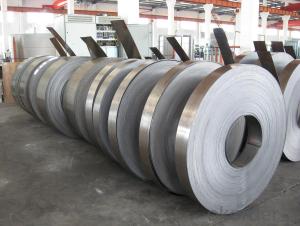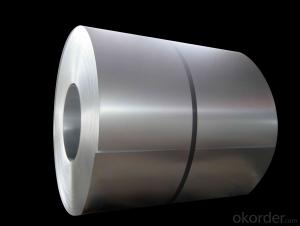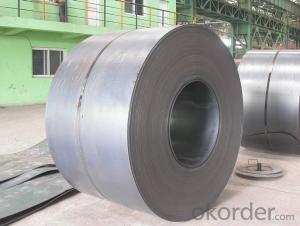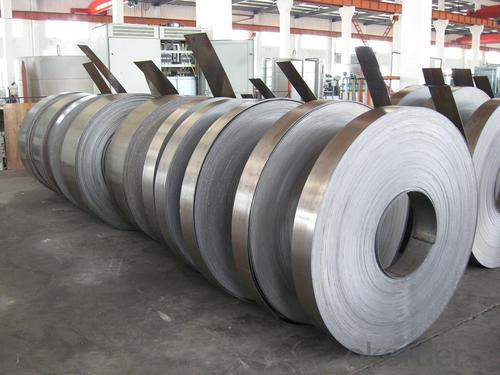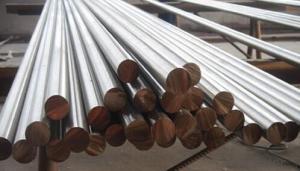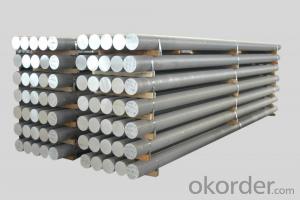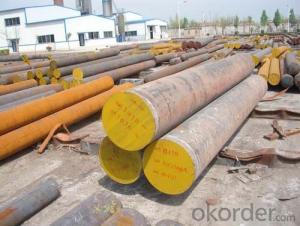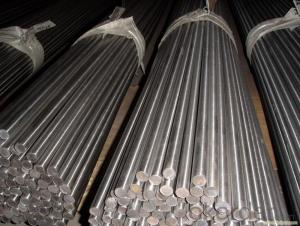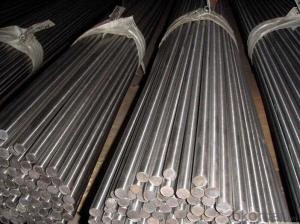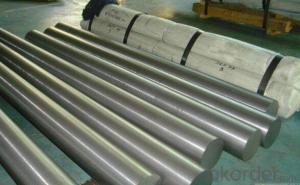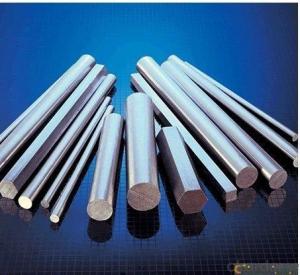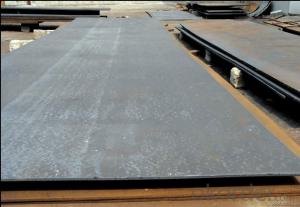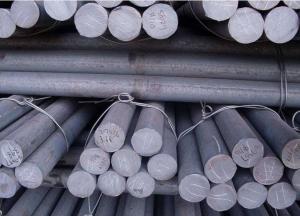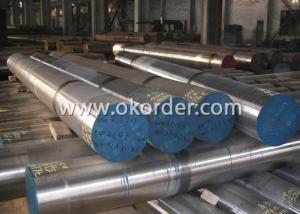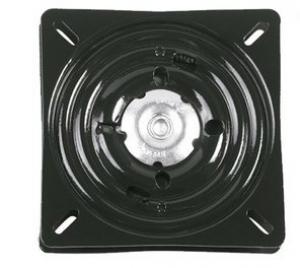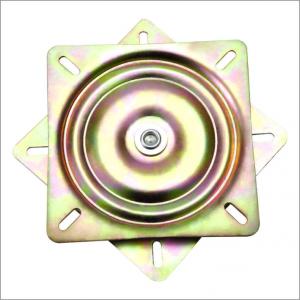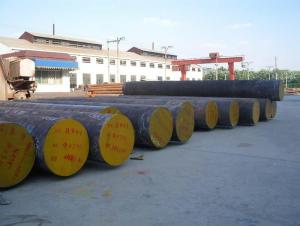GB 55SiCrA/DIN 54SiCr6 Spring Steel Flat
- Loading Port:
- Tianjin
- Payment Terms:
- TT OR LC
- Min Order Qty:
- 23 m.t.
- Supply Capability:
- 30000 m.t./month
OKorder Service Pledge
OKorder Financial Service
You Might Also Like
Specifications
,high strength and toughness
2,good hardenability and plasticity
3,excellent decarburization
55SiCrA/54SiCr6 spring steel
Quick Details:
Name: GB 55SiCrA/DIN 54SiCr6 Spring Steel Flat
Place of Origin:Liaoning,China Brand Name:Dongbei Tegang
Shape:Flat Material:Spring Steel
Steel Grade: GB 55SiCrA/DIN 54SiCr6
Size:Thick: 5mm~10mm;Width: 120mm~500mm
Application: used for making oblate springwhich can bear heavy load in rolling stock and tractor industry; coiled spring which its diameter is less than 30mm; heat resisting spring .
Chemical composition
| C | Si | Mn | P | S | Cr | Ni | Cu |
| 0.51~0.59 | 1.20~1.60 | 0.50~0.80 | ≤0.025 | ≤0.025 | 0.50~0.80 | ≤0.35 | ≤0.25 |
Packing&Delivery:
Packaging details: According to customer's require or export's standard
Delivery Time: In 30days after we receive 30% deposite
Port: Dalian
MOQ: 1TON
Standard:
| ASTM | USA | Ameirican Society of Mechanical Engineers |
| AISI | USA | Acronym of American Iron and Steel Institute |
| JIS | JP | Japanese Industrial Standards |
| DIN | GER | Deutsches Institut für Normung e.V. |
| UNS | USA | Unified Numbering System |
Product Advantages:
1,high strength and toughness
2,good hardenability and plasticity
3,excellent decarburization
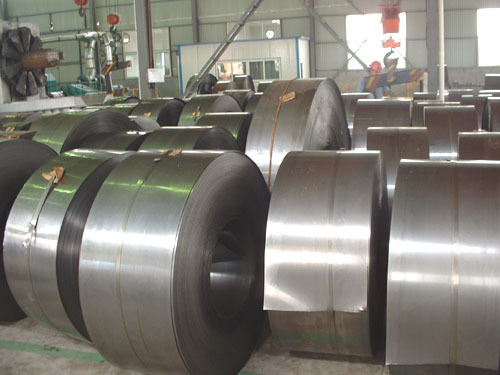
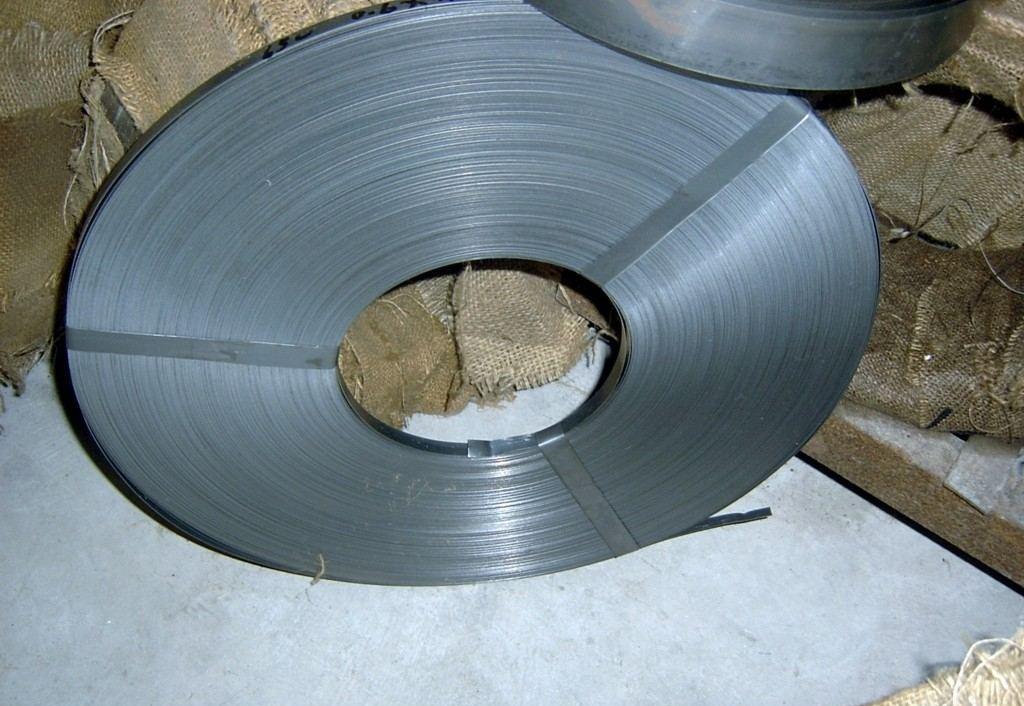
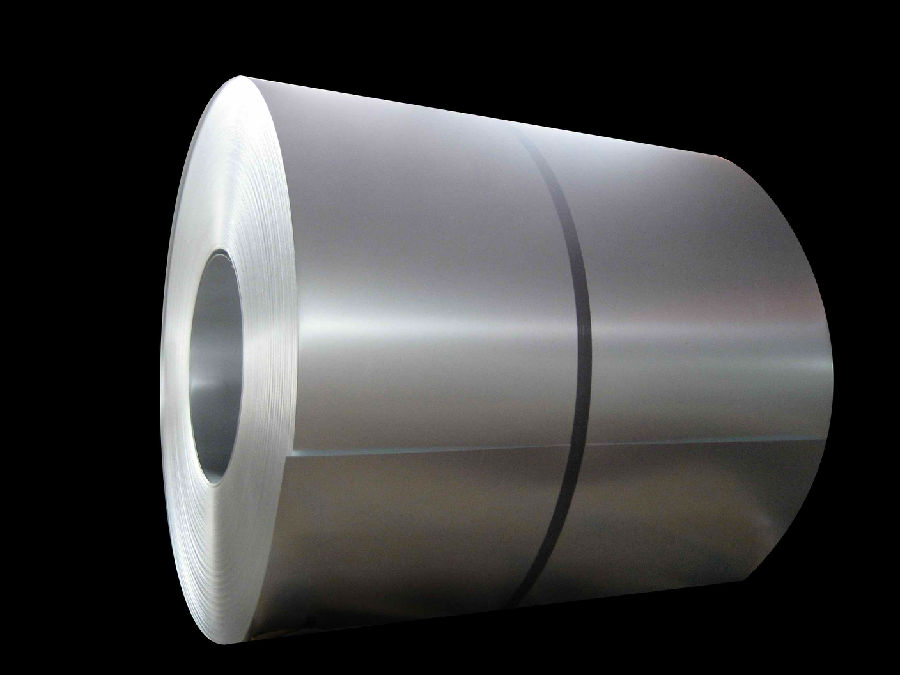
- Q: What are the different types of electrical steel?
- There are several types of electrical steel, including grain-oriented electrical steel (GOES), non-grain-oriented electrical steel (NGOES), and silicon steel.
- Q: How does special steel contribute to the construction machinery industry?
- High-strength and durable components are essential in the construction machinery industry, and special steel plays a crucial role in providing these. It is able to withstand extreme stress and load-bearing requirements, which is particularly important considering the heavy-duty applications of construction machinery. Special steel's excellent mechanical properties allow it to resist severe conditions, such as heavy loads, vibrations, and impacts, ensuring the safety and reliability of the equipment. Special steel is also widely used in critical components of construction machinery, including booms, buckets, tracks, and gears. These components face intense wear and tear due to constant use in harsh environments. However, special steel, engineered with enhanced hardness and wear resistance, helps prolong the lifespan of these components, reducing maintenance costs and downtime. In addition to its durability, special steel provides superior corrosion resistance, a crucial feature for construction machinery used in humid or corrosive environments. By preventing rust and decay, special steel helps maintain the equipment's performance and longevity, ultimately increasing productivity and efficiency in construction projects. Furthermore, special steel allows the construction machinery industry to achieve innovative designs and advanced functionalities. Its versatility allows for the creation of complex shapes and precise tolerances, which are necessary for optimizing machinery performance and efficiency. Special steel also enables the incorporation of advanced technologies, like sensors and automation, enhancing the accuracy and productivity of construction equipment. To summarize, special steel significantly contributes to the construction machinery industry by withstanding extreme conditions, providing superior wear resistance and corrosion protection, and enabling innovative designs. By utilizing special steel in the manufacturing process, construction machinery manufacturers can ensure the durability, safety, and efficiency of their equipment, ultimately benefiting the construction industry as a whole.
- Q: How is special steel manufactured?
- Special steel is manufactured through a process called steelmaking, which involves combining iron with various alloying elements such as chromium, nickel, and molybdenum. This mixture is then heated and processed in electric arc furnaces or basic oxygen furnaces to remove impurities and adjust the chemical composition. The molten steel is further refined and cast into desired shapes or forms, followed by additional heat treatment processes like quenching and tempering to enhance its strength and special properties.
- Q: What are the properties of structural steel?
- Structural steel possesses various properties that make it ideal for construction purposes. It has high strength-to-weight ratio, meaning it can support heavy loads while being relatively lightweight. Steel is also ductile, allowing it to be easily shaped and formed into various structural elements. Additionally, it exhibits excellent durability and resistance to corrosion, making it suitable for long-lasting structures. Moreover, structural steel is fire-resistant, providing enhanced safety in case of a fire. Overall, these properties make structural steel a highly versatile and reliable material in the construction industry.
- Q: What is the significance of special steel in the medical field?
- Special steel, also known as medical grade steel, plays a crucial role in the medical field due to its unique properties and significance. It is specifically designed and manufactured to meet the stringent requirements of the healthcare industry. The significance of special steel in the medical field can be understood through the following points: 1. Biocompatibility: Special steel is biocompatible, meaning it is non-toxic and does not provoke an adverse reaction when in contact with the human body. This makes it an ideal material for medical devices such as surgical instruments, implants, and orthopedic tools. 2. Corrosion resistance: Special steel is highly resistant to corrosion and rust, ensuring the longevity and durability of medical instruments. Instruments used in surgical procedures need to be repeatedly sterilized, and the corrosive nature of sterilization agents can degrade ordinary steel. Special steel, with its superior corrosion resistance, can withstand these harsh conditions, reducing the risk of contamination and maintaining the integrity of medical equipment. 3. Mechanical properties: Special steel possesses excellent mechanical properties, such as high strength, toughness, and ductility. These characteristics are essential for medical devices, as they need to withstand the stresses and strains of surgical procedures, maintain their shape, and provide reliable performance. 4. Sterilization compatibility: Special steel can withstand various sterilization methods, including steam sterilization, ethylene oxide sterilization, and gamma radiation. This ensures that medical instruments made from special steel can be effectively sterilized, preventing the transmission of infections and reducing the risk of contamination during surgeries. 5. Precision manufacturing: Special steel can be fabricated into intricate shapes and sizes, allowing the production of precise medical instruments. Its superior machinability enables the creation of fine and sharp edges, crucial for surgical tools used in delicate procedures. 6. Antibacterial properties: Some special steels, such as stainless steel, possess inherent antibacterial properties. This characteristic is particularly important in the medical field, where the prevention of infections is paramount. Instruments made from antibacterial special steel can inhibit the growth of bacteria, minimizing the risk of post-operative complications. In summary, the significance of special steel in the medical field lies in its biocompatibility, corrosion resistance, mechanical properties, sterilization compatibility, precision manufacturing, and potential antibacterial properties. These qualities make special steel an indispensable material for manufacturing medical devices, ensuring their reliability, durability, and safety for both healthcare professionals and patients.
- Q: What are the advantages of using special steel in aerospace applications?
- There are numerous advantages to using special steel in aerospace applications. Firstly, special steel possesses high strength and excellent mechanical properties, making it ideal for withstanding extreme conditions encountered in the aerospace industry. It has the ability to withstand high temperatures, pressures, and vibrations, ensuring the safety and reliability of aircraft components. Secondly, special steel offers exceptional corrosion resistance, which is crucial in aerospace applications. Aircraft are exposed to harsh environments, including moisture, atmospheric gases, and various chemicals. Special steel's resistance to corrosion helps prevent degradation and maintains the structural integrity of the aircraft, reducing the need for frequent maintenance and repair. Additionally, special steel has excellent fatigue resistance, meaning it can endure repeated loading cycles without compromising its structural integrity. This property is particularly important in aerospace applications, where components are subjected to cyclic loading due to takeoffs, landings, and turbulence. By using special steel, the risk of fatigue failure is significantly reduced, ensuring the longevity and safety of the aircraft. Furthermore, special steel offers good weldability and formability, allowing for the production of complex and intricate aerospace components. This flexibility in manufacturing processes allows for customization and optimization of designs, resulting in lightweight yet robust structures. The use of special steel in aerospace applications contributes to the overall weight reduction of aircraft, leading to improved fuel efficiency and increased payload capacity. In conclusion, the advantages of using special steel in aerospace applications are its high strength, excellent mechanical properties, corrosion resistance, fatigue resistance, weldability, and formability. These properties make it an ideal material for withstanding the demanding conditions experienced in the aerospace industry, ensuring the safety, reliability, and efficiency of aircraft.
- Q: What are the different methods for improving the toughness of special steel?
- There are several methods for improving the toughness of special steel. One method is through heat treatment, which involves processes such as quenching and tempering to enhance the steel's microstructure and increase its toughness. Another method is alloying, where specific elements are added to the steel composition to improve its toughness properties. Additionally, techniques like grain refinement and controlled rolling can also be employed to enhance the toughness of special steel.
- Q: What are the different methods of joining special steel components?
- Various techniques exist for joining special steel components, each offering unique advantages and applications. Welding, brazing, soldering, mechanical fastening, and adhesive bonding are among the most commonly used methods. 1. Welding represents a widely employed method for joining special steel components. It involves melting the base metals and adding a filler material to create a robust bond. Depending on the specific requirements and properties of the steel components, different welding techniques like arc welding, gas welding, or laser welding can be utilized. 2. Brazing utilizes a filler material with a lower melting point than the base metals. This material is heated and distributed between the components, forming a strong bond as it solidifies. Brazing is particularly suitable for high-temperature applications and can be performed using a torch, furnace, or induction heating. 3. Soldering is similar to brazing but employs a lower melting point filler material known as solder. It finds common use in electrical and electronic applications, as well as for joining small or delicate steel components. Soldering necessitates less heat and can be accomplished using a soldering iron or hot air gun. 4. Mechanical fastening involves joining components using mechanical means such as screws, bolts, nuts, or rivets. This method is often preferred when disassembly or reassembly is necessary, as it allows for easy removal and replacement of components. Mechanical fastening is suitable for applications requiring a strong and reliable joint, especially when welding or brazing may not be feasible. 5. Adhesive bonding is another method employed for joining special steel components. It entails applying an adhesive material to the mating surfaces, which then cures or hardens to create a robust bond. Adhesive bonding is commonly used when a continuous joint is required or when joining dissimilar materials. It offers advantages in applications necessitating vibration damping or sealing. The selection of the appropriate joining method depends on various factors such as the specific requirements of the application, the properties of the steel components, and the desired strength and durability of the joint. Each method has its own strengths and limitations.
- Q: How is special steel stored and transported?
- To maintain the quality and integrity of special steel, it is handled with utmost care during storage and transportation. During storage, the steel is kept in a controlled environment with the right temperature and humidity levels to prevent corrosion and damage. Covered warehouses and storage facilities specifically designed for steel are used to shield it from rain, snow, and sunlight. When it comes to transportation, different methods are employed depending on the quantity and distance. For short distances, smaller amounts of steel are transported using trucks equipped with flatbeds or enclosed trailers. These trucks are designed to securely hold and protect the steel, ensuring it does not shift or get damaged during transit. However, for longer distances or larger quantities, rail or sea transportation is preferred. Rail transportation offers a smooth and stable journey, minimizing the risk of damage caused by vibrations or sudden movements. Specially designed railcars are used to securely store and protect the steel during transit. Sea transportation involves loading the steel onto shipping containers or specialized vessels. Containers are sealed and secured to prevent any movement or damage during the journey. Specialized vessels, such as roll-on/roll-off ships or heavy-lift vessels, are used for oversized or extremely heavy steel components. In all cases, special steel is carefully packaged and secured using appropriate materials like wooden crates, steel strapping, or plastic wrapping to prevent scratches or dents. The transportation process is closely monitored, and necessary precautions are taken to ensure the steel reaches its destination in optimal condition. Overall, the storage and transportation of special steel require thorough planning, proper handling, and the use of specialized equipment to safeguard its quality and protect it from potential damage or degradation.
- Q: What are the recycling options for special steel?
- Special steel can be recycled in various ways. One possibility is to bring it to a local scrap yard or metal recycling facility, where they have the necessary equipment to process and recycle it. Typically, they will pay you for the steel based on its weight and current market value. Another option is to get in touch with a specialized recycling company that specifically deals with special steel. These companies possess the expertise to handle and recycle this type of steel, ensuring proper processing and reuse. Furthermore, certain steel manufacturers and distributors have their own recycling programs in place. They may offer take-back programs, collecting and recycling special steel from their customers. This option can be convenient since it eliminates the need to search for a separate recycling facility. It's important to keep in mind that special steel may require special handling and processing due to its unique properties. Therefore, it is advisable to consult with a professional or contact the recycling facility or company in advance, ensuring they can properly handle and recycle the specific type of special steel you possess.
Send your message to us
GB 55SiCrA/DIN 54SiCr6 Spring Steel Flat
- Loading Port:
- Tianjin
- Payment Terms:
- TT OR LC
- Min Order Qty:
- 23 m.t.
- Supply Capability:
- 30000 m.t./month
OKorder Service Pledge
OKorder Financial Service
Similar products
Hot products
Hot Searches
Related keywords
